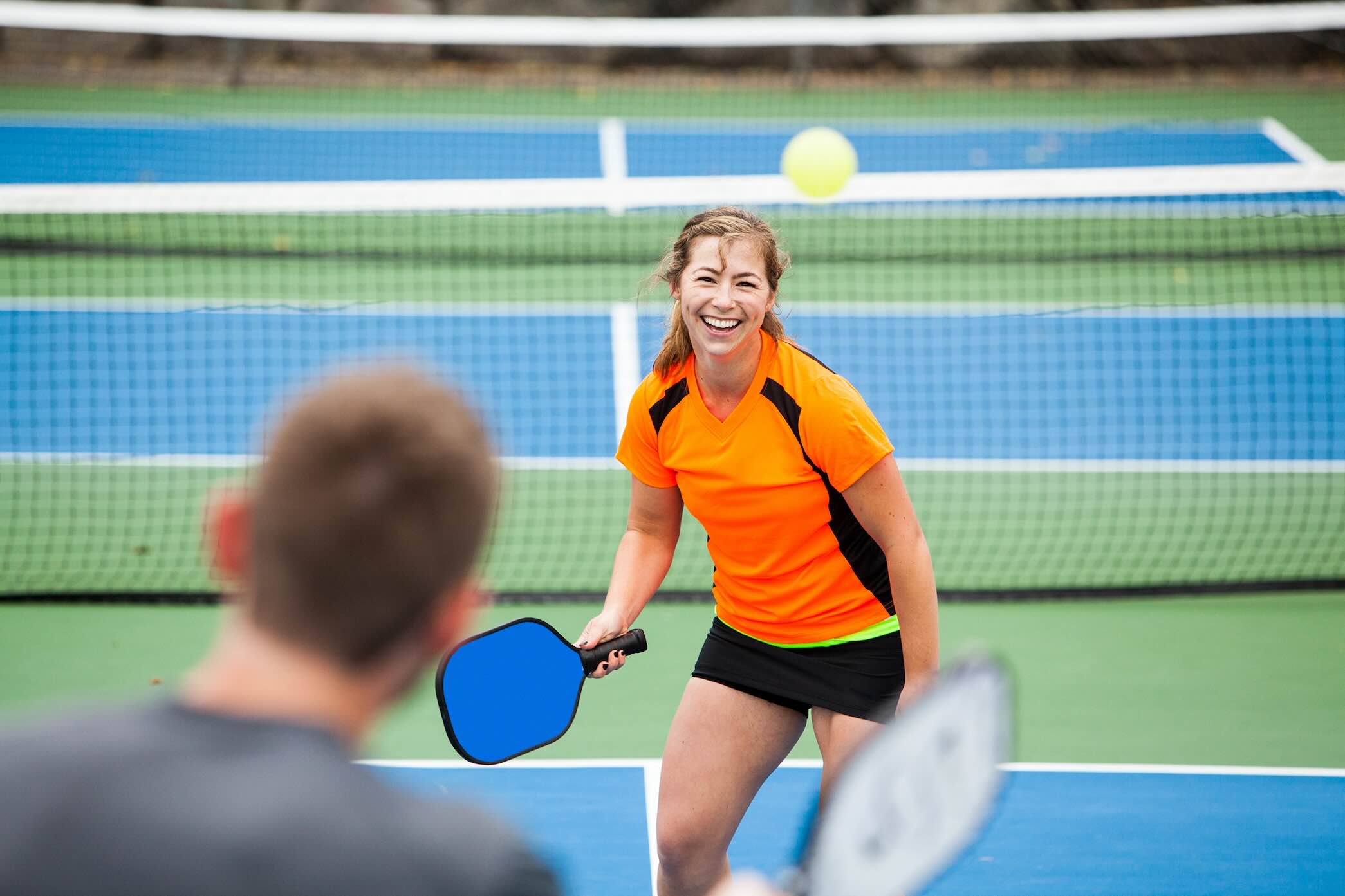Did you know that football players are at significant risk of football knee injury due to the high-intensity nature of the sport? Understanding the causes, treatments, and prevention strategies for these injuries can help keep athletes on the field and performing at their best.
In this blog post, I’ll explore common football knee injuries that I see here in Colorado Springs, immediate actions to take when an injury occurs, diagnosis and treatment options, and tips for preventing injuries and returning to the sport after recovery.
Key Takeaways
- Football knee injuries such as ACL, MCL and Meniscus Tears can occur due to contact, non-contact or overuse situations.
- Diagnosis and treatment options range from conservative methods to arthroscopic surgery with a rehabilitation program overseen by medical professionals.
- Prevention strategies include strengthening exercises, balance & stability training and proper movement patterns for minimizing the risk of injury.
Common Football Knee Injuries: ACL, MCL, and Meniscus Tears
Football players are often subjected to sudden stops, jumps, and twisting movements that can lead to knee injuries such as anterior cruciate ligament (ACL) tears, medial collateral ligament (MCL) tears, and meniscus tears. These football injuries can result from contact, non-contact, or overuse situations in the sport. Understanding the causes and symptoms of the most common knee injury like these, as well as other knee injuries, is key to addressing them effectively and preventing further harm.
In addition to sudden twisting motions or side impacts, other factors can contribute to knee ligament injuries in football, such as tight hamstrings and/or calves, poor balance, and repetitive twisting movements. Recognizing the potential risk factors and warning signs can help players take preventive measures to protect their knee ligaments and minimize the chances of sustaining a severe knee injury.
Anterior Cruciate Ligament (ACL) Tear
The ACL is a crucial ligament that connects the femur to the tibia in the center of the knee, serving to limit rotation and forward motion of the tibia. This ligament is particularly important for football players, who require stability and strength in their knees to prevent acl injuries. Alongside the ACL, the lateral collateral ligament and the posterior cruciate ligament also play a role in providing knee stability. ACL tears typically result from shearing forces during sudden stops or landings from jumps, as well as twisting motions.
Instability, discomfort, and inflammation in the knee may indicate an ACL tear. Seeking medical attention immediately upon suspicion is pivotal, as timely diagnosis and treatment can restore knee stability and function. In many cases, surgery may be necessary to reconstruct the ACL.
Medial Collateral Ligament (MCL) Tear
MCL tears can occur due to direct impact or sudden twisting movements. These injuries can cause pain and instability on the inner side of the knee, making it difficult for athletes to continue playing. Treatment for an MCL tear may involve non-surgical methods such as physical therapy, activity modifications, and bracing, or it may require arthroscopic surgery. Anti-inflammatories and icing may also be used to reduce pain and swelling.
The recovery time for MCL injuries depends on the severity of the damage. For grade I and II MCL injuries, the typical return-to-play time is several weeks to two months, provided symptoms have improved.
Meniscus Tear
A meniscus tear refers to damage to the medial and lateral menisci, which serve as cushions and shock absorbers within the knee. These tears are typically caused by extreme stress or twisting movements. If left untreated, a meniscus tear can lead to pain, swelling, and potential long-term complications such as osteoarthritis.
Dealing with a meniscus tear demands accurate diagnosis, as losing the meniscus can impair the knee’s normal functioning. Treatment options may include conservative measures, such as rest and physical therapy, or surgical interventions like arthroscopy to repair the torn meniscus.
Immediate Steps to Take When a Knee Injury Occurs
Upon a knee injury, immediate action is required to minimize further damage and alleviate pain. The first step is to cease activity and rest the joint. Applying ice packs for 15-20 minutes at a time can help reduce swelling. Compression, such as wrapping the knee with an elastic bandage, and elevation can also aid in decreasing swelling and providing support to the injured knee.
Avoiding weight on the injured knee and seeking immediate medical attention is of utmost importance. A medical professional can assess the extent of the injury and recommend the appropriate course of action for treatment and rehabilitation.
Diagnosis and Treatment Options for Football Knee Injuries
Diagnosing football knee injuries involves a combination of physical examinations, imaging tests, and sometimes arthroscopic surgery. Once a diagnosis has been established, treatment options can range from conservative methods like rest, ice, and physical therapy to more invasive options like surgery and rehabilitation.
Sports medicine professionals play a crucial role in managing football knee injuries, providing expert diagnosis, treatment, and rehabilitation services to help athletes return to their sport in a safe and timely manner. In the broader context of sports injuries, football knee injuries are just one example of the many challenges faced by these professionals.
Diagnosis Process
The diagnosis process for knee injuries typically begins with a physical examination, during which a healthcare professional assesses the range of motion and stability of the knee. Following the physical exam, imaging tests such as X-rays, MRI, or CT scans may be used to accurately determine the extent of the injury and identify any potential complications.
A swift and accurate diagnosis is pivotal in devising the best treatment plan for the injured athlete, and in preventing further harm and long-term complications.
Conservative Treatment
Conservative treatment for knee injuries may involve:
- Rest
- Ice
- Compression
- Elevation (RICE)
These measures can help alleviate symptoms and promote healing. Additionally, physical therapy can play a significant role in the recovery process, helping to strengthen the muscles around the knee and improve joint stability.
In some cases, particularly for less severe injuries, conservative treatment may be sufficient to promote healing and allow the athlete to return to their sport. However, more severe injuries may require surgical intervention and a more extensive rehabilitation process.
Arthroscopic Surgery
Arthroscopic surgery may be necessary for severe knee injuries, such as ACL reconstruction or meniscus repair. This minimally invasive surgical procedure involves the use of a small camera, called an arthroscope, which is inserted into the knee joint to visualize the damaged structures and guide surgical instruments to repair the injury.
Arthroscopic surgery, offering less pain, faster recovery, and lower risk of complications than traditional open surgery, is a viable option. Yet, working closely with a sports medicine professional to select the most suitable treatment for the specific injury is paramount.
Rehabilitation and Physical Therapy
Rehabilitation and physical therapy are critical components of the recovery process following a knee injury, regardless of whether surgery was performed. Through targeted exercises and therapeutic modalities, physical therapists can help athletes regain strength, stability, and functionality in the affected knee.
Following a physical therapist-designed custom rehabilitation program contributes to ensuring optimal recovery and reducing the risk of re-injury. Patience, dedication, and adherence to the prescribed program are crucial factors in achieving a successful recovery and return to sport.
Preventing Football Knee Injuries: Tips and Exercises
Preventing football knee injuries involves a combination of strengthening exercises, balance and stability training, and practicing proper movement patterns. By focusing on these key areas, athletes can reduce their risk of injury and maintain optimal performance on the field.
In addition to reducing the risk of injury, these preventative measures can also help improve overall athletic performance, making them an essential component of any football training program, especially for offensive and defensive linemen.
Strengthening Exercises
Strengthening exercises should target the muscles surrounding the knee, as well as the hamstrings, calves, and hips. By strengthening these muscle groups, athletes can improve joint stability and reduce the risk of knee injuries.
Examples of effective strengthening exercises include:
- Squats
- Lunges
- Leg presses
- Hamstring curls
- Calf raises
Incorporating these exercises into a regular training program can help athletes build strength, improve balance, and minimize the chances of sustaining a knee injury.
Balance and Stability Training
Balance and stability training can help improve knee joint stability and reduce the risk of injury. Exercises that focus on balance and stability include single-leg balance exercises, wobble cushion exercises, and SAQ (speed, agility, and quickness) exercises.
Incorporating balance and stability training into a regular exercise routine can have several benefits, including:
- Helping to prevent knee injuries
- Enhancing overall athletic performance
- Improving agility and quickness
- Increasing core strength and stability
This is especially important in sports like football that require quick changes in direction and rapid acceleration.
Proper Movement Patterns
Practicing proper movement patterns is another essential aspect of preventing knee injuries in football. This includes focusing on correct landing techniques, cutting movements, and pivoting actions, which can all help reduce the strain on the knee joint and minimize the risk of injury.
In addition to practicing proper movement patterns during training, it’s also important for athletes to maintain good form and body mechanics during competition. This can help ensure that the risk of injury is minimized even during high-intensity gameplay.
Returning to Football After a Knee Injury
A knee injury’s recovery journey back to football demands gradual progression through physical therapy and rehabilitation under doctor and physical therapist guidance. Patience and adherence to the prescribed rehabilitation program are vital for ensuring full healing before the sport’s resumption.
As the athlete regains strength, stability, and function in the injured knee, they can gradually increase the intensity of their training and eventually return to full-contact practice and competition. However, it’s crucial to continue monitoring the knee for signs of pain or instability, as this may indicate the need for further treatment or a modified training program.
The Role of Sports Medicine Professionals in Football Knee Injury Management
As a sports medicine doctor in Colorado Springs, I can’t stress enough the critical role we professionals have in managing knee injuries in the sport. Our duties are multifaceted and aim to provide a comprehensive approach to these injuries.
The first and most urgent step is diagnosing the severity of the knee injury. Accurate diagnosis is crucial, as it lays the foundation for subsequent treatment protocols. Misdiagnosing an injury not only can delay recovery but also potentially worsen the condition.
Once we’ve ascertained the extent of the injury, our next responsibility is to present the most effective treatment options to the athlete. Given the range of knee injuries—from sprains to ligament tears—tailored treatment plans are vital. These can vary from physical therapy and rest to surgical interventions.
Beyond treatment, we also serve as guides through the recovery journey. The process of healing is not linear and varies greatly among individuals. Offering precise guidance on what to expect and how best to navigate the physical and psychological hurdles of recovery can significantly impact the time it takes for an athlete to return to play.
But our job doesn’t end with successful rehabilitation. We are also responsible for devising prevention strategies that help minimize the risk of future injuries. These can include recommending specific strengthening exercises, lifestyle modifications, or even changes in playing techniques.
In essence, we sports medicine professionals are not just healers but also advisors, strategists, and supporters in the journey to ensure the health and well-being of football players suffering from knee injuries. Collaboration between athletes and skilled sports medicine doctors is essential for optimal care. It allows for not just recovery but a safe and timely return to the sport each athlete loves.
Summary
Understanding football knee injuries, their causes, and treatment options is essential for athletes looking to maintain optimal performance and minimize the risk of injury. From ACL, MCL, and meniscus tears to the importance of immediate care, diagnosis, and rehabilitation, awareness of these issues can help athletes make informed decisions about their health and well-being.
By implementing preventative measures, such as strengthening exercises, balance and stability training, and practicing proper movement patterns, athletes can reduce their risk of knee injuries and enjoy a long, successful career in the sport they love.
Frequently Asked Questions
What is the most common knee injury in football?
The most common knee injury in football is a rupture of the ACL (anterior cruciate ligament), which can occur as the result of contact or non-contact injuries. In contact injuries, the ACL is usually torn when a player is tackled or collides with another player. Non-contact injuries occur when the player changes direction quickly, stops suddenly, or lands awkwardly from a jump. The ACL is a critical stabilizing ligament
How do you treat a football knee injury?
Treatment for a football knee injury may include strengthening exercises, the use of ice therapy, anti-inflammatory medications, and, in severe cases, arthroscopic surgery to remove the damaged cartilage and realign parts of the quadriceps muscle. In order to treat a football knee injury, strengthening exercises are often recommended. Ice therapy and anti-inflammatory medications can also be used to reduce pain and swelling. In more severe cases, arthroscopic surgery may be necessary to remove damaged cartilage and realign parts of the quadriceps muscle.
How long does a knee injury take to heal in football?
Knee injuries can take anywhere from a few days to up to 18 months to heal, depending on the severity of the injury. Following proper care and advice from your physician is important in order to return to competitive sports without re-injury.
What are the types of knee injuries in football?
Football injuries are commonly found in the knee, and can include an MCL sprain, a meniscus tear, an ACL tear, posterior cruciate ligament injury, patellofemoral pain syndrome, tendonitis, bursitis, Osgood-Schlatter’s syndrome and occasionally fractures.
How to prevent knee injuries in football?
Warm up properly and stretch both before and after exercise, strengthen your hamstring and quadriceps muscles, make sure your cleats are the right size and provide enough support, and eat meals that include calcium and protein to help protect against knee injuries. Stretching and warming up before and after exercise is essential for preventing injury. Make sure to target your hamstring and quadriceps muscles to ensure they are strong and flexible. Additionally, make sure your cleats are the right size and provide enough support. Finally, eating meals that include calcium and protein can help protect against knee injuries.




